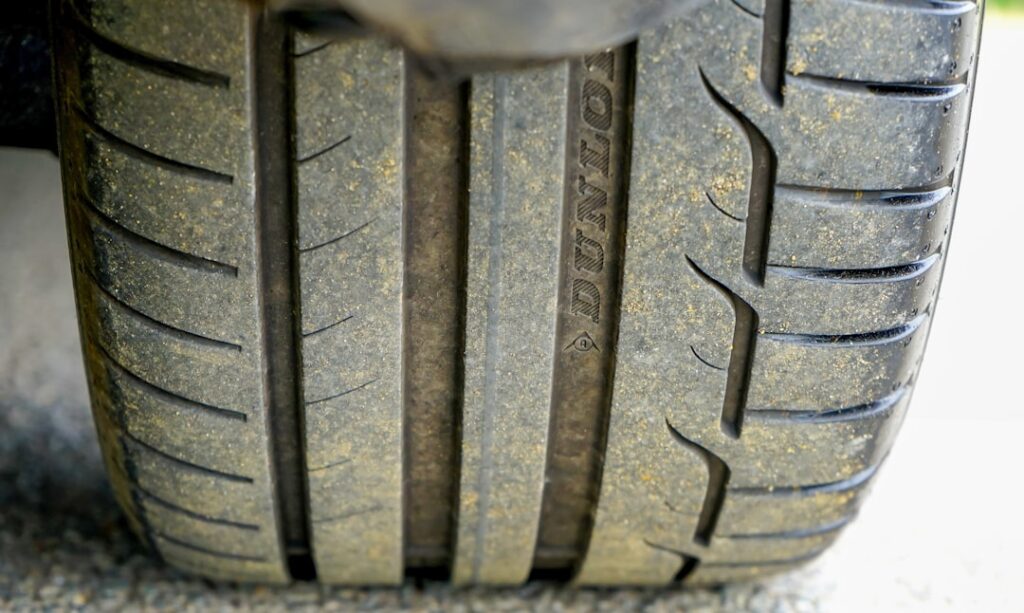As ambient temperatures rise during the summer months, a critical and often overlooked vehicle component is subjected to significant physical change: your tires. The air inside a tire is a gas, and its behavior is governed by the principles of thermodynamics. Understanding this relationship isn’t just an academic exercise; it’s fundamental to ensuring your vehicle’s safety, maximizing its fuel efficiency, and extending the life of your tires.
The core principle at play is the Ideal Gas Law, which dictates that for a fixed volume of gas (like the air inside a tire), its pressure is directly proportional to its temperature. As a quantitative rule of thumb, for every 10°F (5.6°C) increase in the outside temperature, your tire pressure will increase by approximately 1 PSI (pound per square inch). While this may seem minor, a summer heatwave can easily increase a tire’s baseline pressure by 3-5 PSI before the car even moves. This leads to a state of overinflation, which carries measurable risks.
The Data-Driven Case Against Overinflation
Incorrect tire pressure compromises the engineered balance of your vehicle. Overinflation is particularly dangerous because it alters the tire’s “contact patch”—the specific area of the tread that makes contact with the road surface.
- Reduced Safety: An overinflated tire bulges in the center, lifting the shoulder treads off the road. This shrinks the contact patch, leading to a quantifiable reduction in grip. The consequences include increased stopping distances and less responsive handling, especially during emergency maneuvers. Furthermore, the combination of high ambient temperatures, heat generated from driving, and excessive internal pressure dramatically increases the statistical probability of a catastrophic tire blowout.
- Decreased Tire Longevity: When the contact patch is reduced to just the center of the tread, that area experiences accelerated wear. This uneven wear pattern significantly shortens the usable life of the tire, leading to premature and costly replacement.
- Negative Economic Impact: While severe underinflation is more commonly cited for its negative effect on fuel economy, maintaining the correct pressure is the key to optimization. The U.S. Department of Energy notes that proper inflation can improve gas mileage by an average of 0.6% and up to 3%. Overinflation creates a harder, less forgiving tire, which can marginally affect efficiency and create a harsh ride, but the primary economic loss comes from replacing tires worn out by improper inflation.
A Step-by-Step Guide to Managing Tire Pressure in the Heat
To counteract the effects of heat, follow this precise, data-centric procedure. The goal is not to randomly let air out on a hot day, but to set the correct baseline pressure under the right conditions.
Step 1: Identify the Correct Inflation Pressure
Your vehicle’s manufacturer has determined the optimal tire pressure for safety, handling, and fuel economy. This number is not the “Max Press” figure molded into the tire’s sidewall. That number represents the maximum pressure the tire can safely hold, not the recommended operating pressure.
Locate the correct PSI on the tire information placard, a sticker typically found on the driver’s side doorjamb, inside the glove box door, or on the fuel filler door. Note that front and rear tires may require different pressures.
Step 2: Measure Pressure “Cold”
This is the most critical step for accuracy. “Cold” tires are defined as those on a vehicle that has been stationary for at least three hours or has been driven less than one mile. Measuring pressure when tires are hot from driving will give you an artificially high reading, leading to incorrect adjustments. The manufacturer’s recommended PSI is the target for cold tires; it inherently accounts for the pressure increase that occurs during normal operation.
Step 3: Use a Reliable Gauge
For data-driven maintenance, precision is key. While any gauge is better than none, a high-quality digital or dial-type pressure gauge will provide more accurate readings than a simple stick gauge.
Step 4: Adjust as Needed
With your vehicle’s recommended cold PSI and a reliable gauge, follow this process for each tire:
1. Unscrew the plastic cap from the tire’s valve stem.
2. Press the gauge firmly onto the valve stem to get a pressure reading.
3. Compare your reading to the manufacturer’s recommended PSI from the doorjamb sticker.
4. If the cold pressure is above the recommended level: Use the nub on your gauge or a small tool to press the pin inside the valve stem, releasing air in short bursts. Re-check the pressure until it matches the specification.
5. If the cold pressure is below the recommended level: Use an air compressor (found at most gas stations) to add air until you reach the target PSI.
6. Replace the valve stem cap securely.
Step 5: Don’t Forget the Spare
Your spare tire also loses pressure over time and is useless in an emergency if it is flat. Check its pressure and ensure it is inflated to the level specified on its placard or in the owner’s manual (note: temporary spares often require a much higher pressure, e.g., 60 PSI).
By integrating this simple, analytical check into your monthly routine, you directly mitigate the risks posed by summer heat. You ensure your vehicle operates with the safety profile and efficiency its engineers intended, protecting both your well-being and your wallet.
Photo by Sardar Faizan on Unsplash

